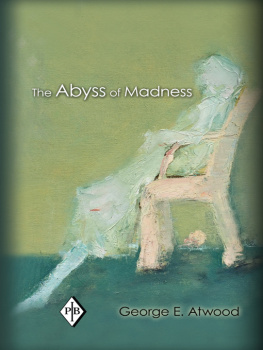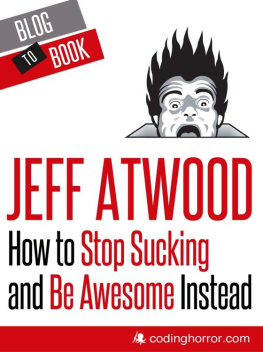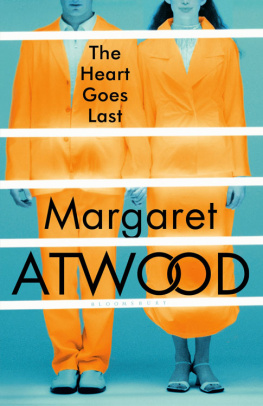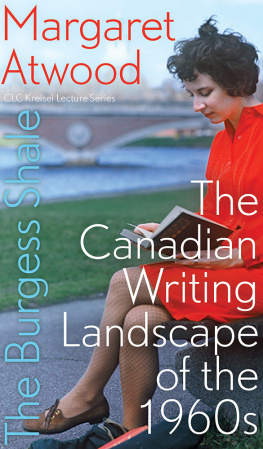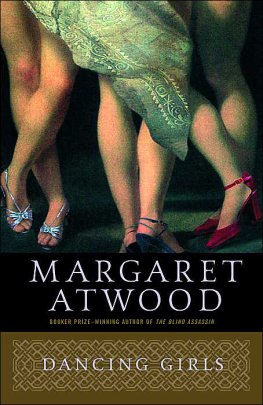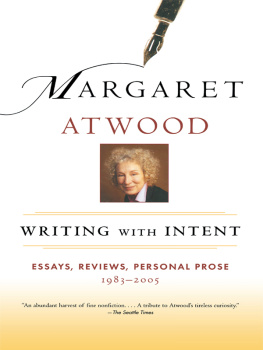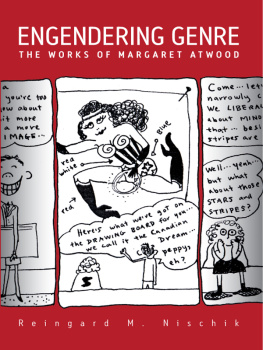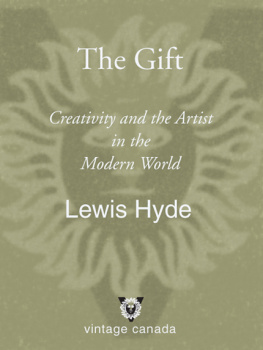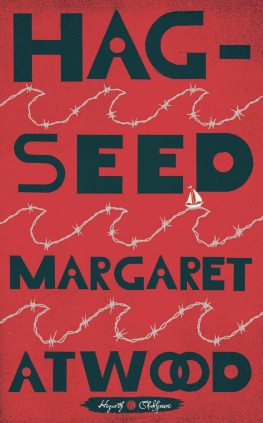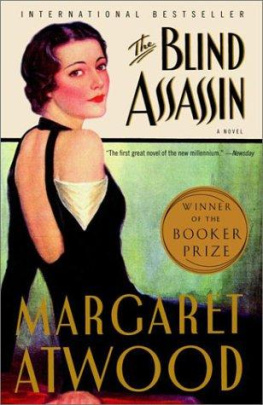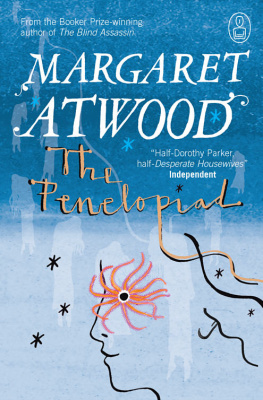By Margaret Atwood
FICTION
The Edible Woman
Surfacing
Lady Oracle
Dancing Girls
Life Before Man
Bodily Harm
Murder in the Dark
Bluebeards Egg
The Handmaids Tale
Cats Eye
Wilderness Tips
Good Bones
The Robber Bride
Alias Grace
The Blind Assassin
Good Bones and Simple Murders
Oryx and Crake
The Penelopiad
The Tent
Moral Disorder
The Year of the FloodPOETRY
Double Persephone
The Circle Game
The Animals in That Country
The Journals of Susanna Moodie
Procedures for Underground
Power Politics
You Are Happy
Selected Poems
Two-Headed Poems
True Stories
Interlunar
Selected Poems II: Poems Selected and New 19761986
Morning in the Burned House
The DoorNONFICTION
Survival: A Thematic Guide to Canadian Literature
Days of the Rebels 18151840
Second Words
Strange Things: The Malevolent North in Canadian Literature
Two Solicitudes: Conversations (with Victor-Lvy Beaulieu)
Negotiating with the Dead: A Writer on Writing
Moving Targets: Writing with Intent 19822004
Writing with Intent: Essays, Reviews, Personal Prose 19832005
Payback: Debt and the Shadow Side of WealthFOR CHILDREN
Up in the Tree
Annas Pet (with Joyce Barkhouse)
For the Birds
Princess Prunella and the Purple Peanut
Rude Ramsay and the Roaring Radishes
Bashful Bob and Doleful Dorinda


Copyright 2011 by O.W. Toad Ltd.
All rights reserved. Published in the United States by Nan A. Talese / Doubleday, a division of Random House, Inc., New York.
www.nanatalese.com
DOUBLEDAY is a registered trademark of Random House, Inc. Nan A. Talese and the colophon are trademarks of Random House, Inc.
Simultaneously published in Canada by Signal, an imprint of McClelland & Stewart Ltd., Toronto.
Jacket design by Michael J. Windsor
Jacket photograph by Alex and Felix. www.alexandfelix.com
Library of Congress Cataloging-in-Publication Data
Atwood, Margaret, 1939
In other worlds : SF and the human imagination / Margaret Atwood. 1st U.S. ed.
p. cm.
1. Atwood, Margaret, 1939KnowledgeLiterature. 2. Atwood, Margaret, 1939KnowledgeScience fiction. 3. Science fictionHistory and criticism. 4. Science fictionAuthorship. I. Title.
PR9199.3.A8Z545 2011
813.54dc22 2011013776
eISBN: 978-0-385-53397-3
v3.1
For Ursula K. Le Guin
Contents
Introduction
Im a fifty-three-year-old writer who can remember being a ten-year-old writer and who expects someday to be an eighty-year-old writer . OCTAVIA BUTLER
Steel and Dotty (War in Mischiefland) by Margaret Atwood:

I n Other Worlds is not a catalogue of science fiction, a grand theory about it, or a literary history of it. It is not a treatise, it is not definitive, it is not exhaustive, it is not canonical. It is not the work of a practising academic or an official guardian of a body of knowledge. Rather it is an exploration of my own lifelong relationship with a literary form, or forms, or subforms, both as reader and as writer.
I say lifelong, for among the first things I wrote as a child might well merit the initials SF. Like a great many children before and since, I was an inventor of other worlds. Mine were rudimentary, as such worlds are when youre six or seven or eight, but they were emphatically not of this here-and-now Earth, which seems to be one of the salient features of SF. I wasnt much interested in Dick and Jane : the creepily ultra-normal characters did not convince me. Saturn was more my speed, and other realms even more outlandish. Several-headed man-eating marine life seemed more likely to me, somehow, than Spot and Puff.
Our earliest loves, like revenants, have a way of coming back in other forms; or, to paraphrase Wordsworth, the child is mother to the woman. To dateas what I am pleased to think of as an adultI have written three full-length fictions that nobody would ever class as sociological realism: The Handmaids Tale , Oryx and Crake , and The Year of the Flood . Are these books science fiction? I am often asked. Though sometimes I am not asked, but told: I am a silly nit or a snob or a genre traitor for dodging the term because these books are as much science fiction as Nineteen Eighty-Four is, whatever I might say. But is Nineteen Eighty-Four as much science fiction as The Martian Chronicles ? I might reply. I would answer not, and therein lies the distinction.
Much depends on your nomenclatural allegiances, or else on your system of literary taxonomy. Back in 2008, I was talking to a much younger person about science fiction. Id been asked by the magazine New Scientist to answer the question Is science fiction going out of date? But then I realized that I couldnt make a stab at the answer because I didnt really grasp what the term science fiction meant anymore. Is this term a corral with real fences that separate what is clearly science fiction from what is not, or is it merely a shelving aid, there to help workers in bookstores place the book in a semi-accurate or at least lucrative way? If you put skin-tight black or silver clothing on a book cover along with some jetlike flames and/or colourful planets, does that make the work science fiction? What about dragons and manticores, or backgrounds that contain volcanoes or atomic clouds, or plants with tentacles, or landscapes reminiscent of Hieronymus Bosch? Does there have to be any actual science in such a book, or is the skin-tight clothing enough? These seemed to me to be open questions.
This much younger personlets call him Randy, which was in fact his namedid not have a hard and fast definition of science fiction, but he knew it when he saw it, kind of. As I told New Scientist , For Randyand I think hes representativesci-fi does include other planets, which may or may not have dragons on them. It includes the wildly paranormalnot your aunt table-tilting or things going creak, but shape-shifters and people with red eyeballs and no pupils, and Things taking over your body. Here I myself would include such items as Body Snatchersif of extraterrestrial rather than folkloric provenanceand Pod People, and heads growing out of your armpits, though Id exclude common and garden-variety devils, and demonic possession, and also vampires and werewolves, which have literary ancestries and categories all their own.
As I reported in my New Scientist article, for Randy sci-fi includes, as a matter of course, spaceships, and Mad Scientists, and Experiments Gone Awfully Wrong. Plain ordinary horror doesnt countchainsaw murderers and such. Randy and I agreed that you might meet one of those walking along the street. Its what you definitely would not meet walking along the street that makes the grade. Randy judged such books in part by the space-scapes and leathery or silvery outfits on their covers, which means that my speculations about jacket images are not entirely irrelevant. As one friends child put it: Looks like milk, tastes like milkit IS milk! Thus: looks like science fiction, has the tastes of science fictionit IS science fiction!
Or more or less. Or kind of. For covers can be misleading. The earliest mass-market paperbacks of my first two novels, The Edible Woman and Surfacing , had pink covers with gold scrollwork designs on them and oval frames with a mans head and a womans head silhouetted inside, just like valentines. How many readers picked these books up, hoping to find a Harlequin Romance or reasonable facsimile, only to throw them down in tears because there are no weddings at the ends?
Next page

